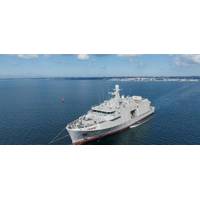
First Dutch Navy Mine Countermeasure Vessel Starts Sea Trials
;up to 10 times faster than traditional methods.The MCM vessels can withstand underwater explosions and have very low acoustic, electrical and magnetic signatures, in line with the missions to be carried out.The rMCM program is being led by Belgium Naval & Robotics, a consortium formed by Naval Group and Exail, involving Kership (a joint venture between Piriou and Naval Group) as industrial prime contractor.Several sea trials campaigns will follow before delivery at the end of 2025.The first vessel, Oostende, intended for the Belgian Navy is currently undergoing trials of its combat system
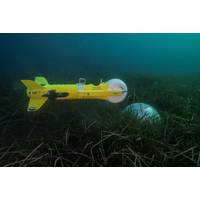
Exail Picks ST Engineering's Manufacturing Base for Belgian-Dutch Navy Program
the esteemed Factory of the Future title four consecutive times since 2015.Factories of the Future invest in digitization, personnel, smart processes and products, as well as in world-class manufacturing.The replacement Mine Counter Measure program (rMCM) was awarded to Belgium Naval & Robotics, a Naval Group-Exail consortium initiated to provide Belgium and Dutch navies with new mine warfare capabilities based on a unique stand-off approach, including surface, underwater and aerial drones."We are delighted that Exail has chosen us to manufacture the electronics for its underwater drones, bound
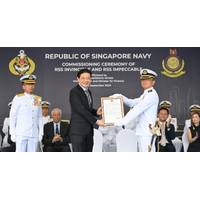
Singapore Boosts Undersea Might with Two New Submarines
project.Such ballistic missile submarines give nations an important strategic edge by allowing them to keep part of their nuclear arsenal hidden.Singapore's neighbour Indonesia has also been investing in submarines, ordering two advanced Scorpene-class boats from French state-owned shipyard Naval Group. Malaysia operates two older versions of the Scorpene class.For Singapore, a close partner with the United States and its Asian allies, advanced submarines allow its military to play a bigger role in the naval drills analysts say are becoming more frequent and important in the Indo-Pacific region
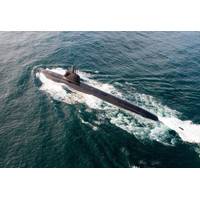
Dutch Government Picks France's Naval Group for Submarines Order
The Dutch government on Friday said it had picked French defense company Naval Group to build four new submarines in coming decades in a long-brewing deal seen by politicians as a potential lifeline for the national shipbuilding industry.The government said the first two submarines would be operational within the next 10 years. It did not specify the exact value of the multi-billion euro contract.The submarines will be of a size to both operate in shallow waters and take part in missions far from base.The agreement still has to be approved by the Dutch parliament, where several parties voiced discontent
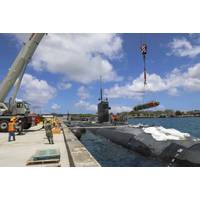
In the Navy:The Role of Advanced Sea Mines in Future Conflicts
, it still remains tethered to the seabed. What if the Mk-54 liquid fuel propulsion system were replaced with a high density battery-driven system, transforming it into a loitering, armed UUV? Such a weapon already exists, in the form of battery-powered torpedoes like the F21 (which was inspired by Naval Group’s D19 UUV), the Black Shark, the Sea Hake, the MU90, and the Saab Lightweight Torpedo (SLWT), all of which can reach speeds of 50 knots and have an endurance of nearly an hour. Endurance is perhaps the greatest challenge in the development of persistent, mobile minefields. Last year, Chinese
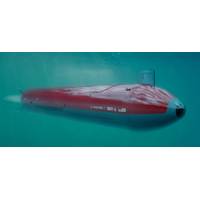
XLUUV: If You Build It, They Will Buy
In August, 2021, after years of delays, cost overruns, and rising tensions, the Australian government canceled a A$90 billion order with France’s Naval Group for 12 conventionally powered submarines intended to replace the Royal Australian Navy (RAN)’s aging fleet of six Collins-class attack subs. Overnight, the future of the RAN’s undersea warfare capability was cast into uncertainty. The very next month, however, the United States and the United Kingdom announced a plan to help Australia fill the void, offering to assist in the design, development, and construction of a new fleet
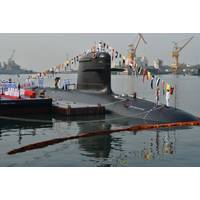
Indian Navy's New Submarine Commissioned
The Indian Navy has commissioned its third Kalvari-class submarine, INS Karanj, built entirely in India to Naval Group's Scorpene design.The Scorpene is a 2,000-ton conventional-propulsion submarine designed and developed by Naval Group for all types of mission, such as surface vessel warfare, anti-submarine warfare, long-range strikes, special operations or intelligence gathering. Extremely stealthy and fast, it has a level of operating automation that allows a limited number of crew, which reduces its operating costs significantly. Its combat edge is highlighted by the fact that it has six
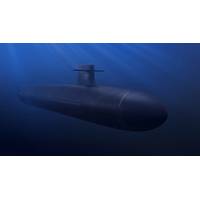
France Launches Program to Build New Generation of Nuclear Submarines
submarines - SSBN (SNLE 3G). The program aims to provide a new generation of four nuclear-powered ballistic missile submarines that will serve the French Navy's operational needs between the 2030s and the 2090s. The construction of the new submarines will be led by the French company Naval Group.The new submarines will gradually replace the second-generation SSBN that will be phased out of active service during 2030s and 2040s.The first submarine is scheduled to enter operational service by 2035. Three other submarines will then be delivered, every five years.Pierre-Eric Pommellet, Naval
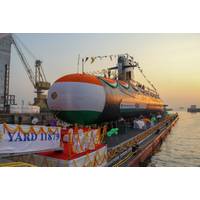
"Made in India": Indian Shipyard Launches Scorpene Submarine Vagir
INS Vagir is the fifth P75 Scorpene submarine entirely built by the Indian shipyard Mazagon Dock Shipbuilders Limited (MDL) based on technology transfer and partnership with Naval Group.After recent commissioning of INS Khanderi in September 2019 and the launch of the INS Vela in May 2019, Vagir is the fifth of the series of six Kalvari-class submarines ordered by India in 2005, to be launched.The submarines have been completely built by Mazagon Dock Shipbuilders Limited (MDL) through a transfer of technology from Naval Group, in line with Indian Government’s “Make in India” policy.


 February 2025
February 2025





